ROC comparison of our code vs. SIFT
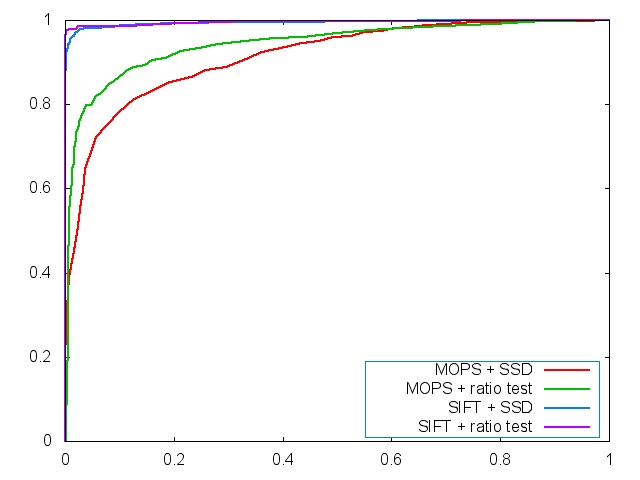
The above graph compares the effectiveness of several feature detection methods when applied to the Yosemite image set with varios thresholds. From the above graph, we can see that MOPS + SSD was the least effective for a decent amount of the thresholds. Right behind it is the MOPS + ratio test which faired a bit better. Finally, the SIFT + ratio comes just barely on top (as you can see from the top left corner) of the SIFT + SSD. This means that given various thresholds, the blue and purple plots were able to consistently find true postives.

The above graph compares the effectiveness of several feature detection methods when applied to the graf image set with varios thresholds. From the above graph, we can see that MOPS + SSD was the least effective for a significant amount of the thresholds. Right behind it is the MOPS + ratio test which faired a bit better. Compared to the above graph, we can see a noticeable difference between the SIFT + ratio test and SIFT + SSD (of course the SIFT + ratio test came out above). This means that for this image set, that was a higher rate of false postiives.
Threshold comparison
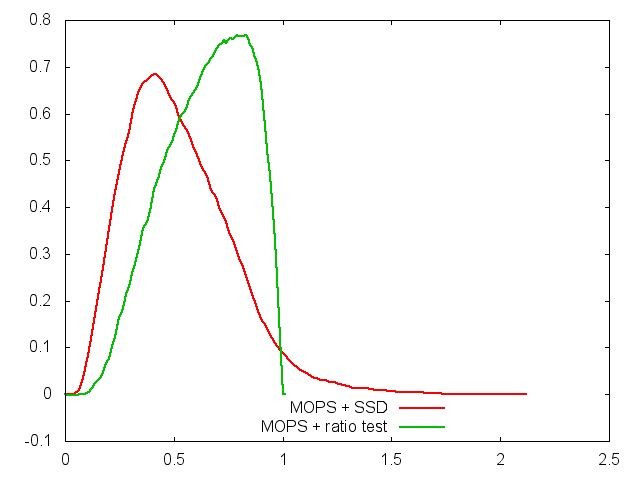
The maximum of the plots represent a point where the true positive rate is large relative to the false positive rate. These points represent threshold values which would generate larger true postives relative to false postiives. For the above plots, both attain an obvious local maximum.
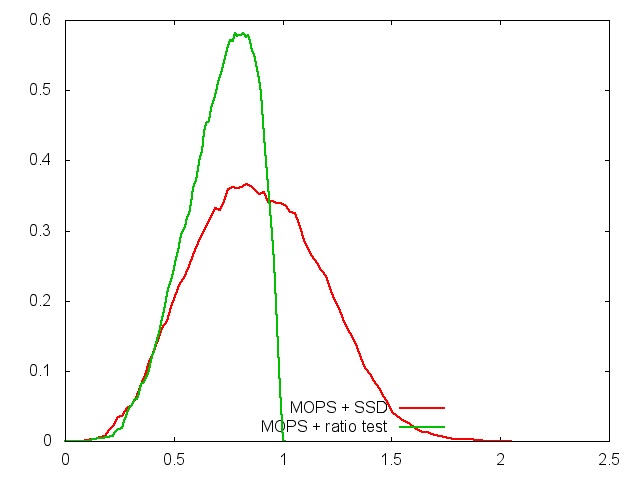
he maximum of the plots represent a point where the true positive rate is large relative to the false positive rate. These points represent threshold values which would generate larger true postives relative to false postiives. For the above plots, we can see the ratio teste generating a high local maximum, but the SSD generates a lower local max that seems to have more spread.
Harris operator
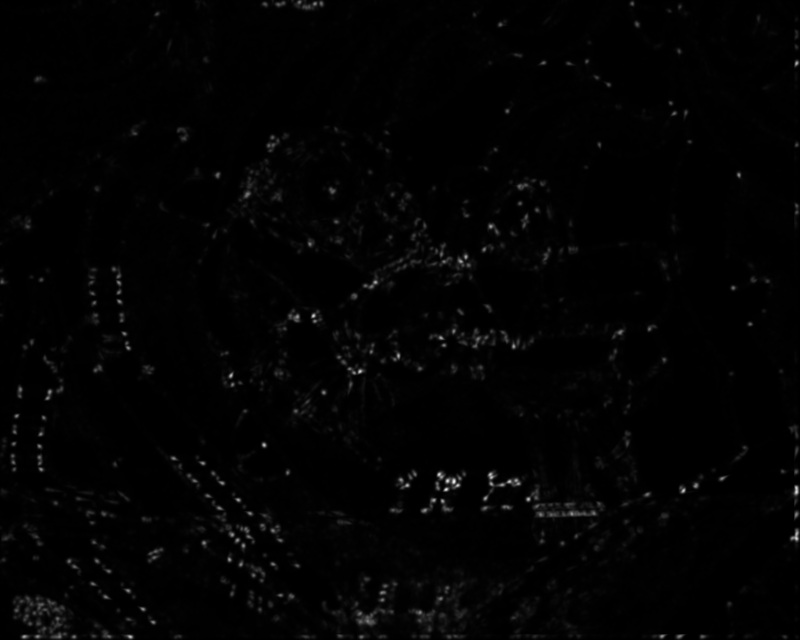
The above image shows the result of applying the Harris operator over the image. The "brighter" the whites, the higher the Harris values. As you can see, the operator found some nice values that were generally dsitributed, but the amount of values found were not that high. Could explain why the plots above showed higher false positives.

The above image shows the result of applying the Harris operator over the image. The "brighter" the whites, the higher the Harris values. Similar to the above image, but we notice some brighter whites and the cluster of values near the top left of the image.
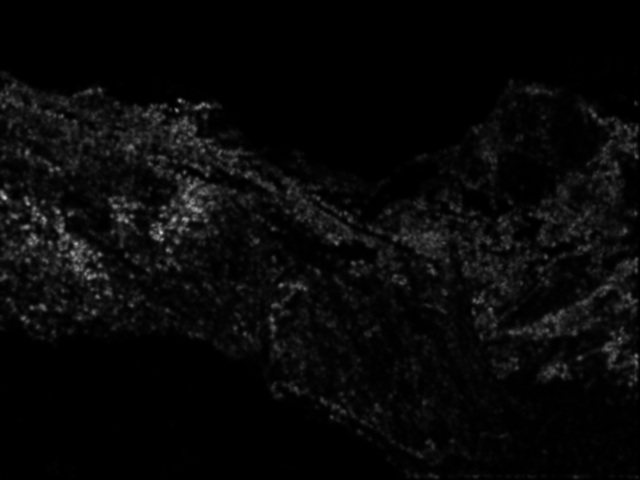
The above image shows the result of applying the Harris operator over the image. The "brighter" the whites, the higher the Harris values. Different from the above images, we can see that a majority of the values are distributed relatively close to each other with almost none near the top or bottom left and right areas. We can almsot see an outline of the picture that was used for processing.

The above image shows the result of applying the Harris operator over the image. The "brighter" the whites, the higher the Harris values. Here we can see more details of the mountain clearly and areas where we could guess were ridges of the mountain.
Test sequence
Almost everything worked well as you can see that our image turned out looking well and is actually stitched together.
There is some extra blurring and areas where the blending isn't too consistent.

Sequence with Kaiden panorama head : Behind Kane
Worked out pretty well! Look how we captured that girl walking by!
You can see on the edges that the image blending didn't go too well.

Sequence taken by hand : Red Square
Everything. Considering this was handheld, we were amazed it turned out this well.
Too many moving targets that cause images of people ghosting around and an obvious stitched area toward the left where the kid is cut off.
